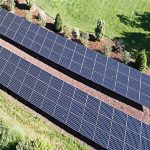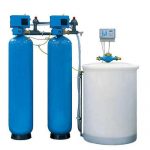GPS devices are becoming more and more prevalent in everyday life. Appearing in everything from cars to phones, from oil rigs to fish finders, we have come to rely on them for quickly accessible, accurate, directions and location information. While many people refer to their phones and other devices as having a GPS compass GPS and compasses actually perform two distinct functions, the former providing location, and the latter indicating magnetic north.
So how are GPS devices able to get us to the store or guide a plane through the dead of night? The answer is a combination of highly accurate measurements and clever implementation of that data.
How GPS Works
The heart of any GPS device is the enclosed receiver. GPS receivers have one basic function, which is to track signals from the GPS satellite network that orbits the Earth. Each of these satellites broadcast a signal with its exact location and a precise time code. If the receiver can get good signals from three satellites, it can use these to triangulate its own position. With a fourth signal, it’s possible for a GPS receiver to also calculate its altitude, a key data point for aviation.
By itself, that’s all that GPS does: find its own location with a high level of accuracy. Depending on the device, this information may then be delivered to the user as anything from raw longitude and latitude to a more polished presentation, such as an arrow on a map.
Turning Location Into Usable Information
As mentioned, GPS merely reports on current location, and not the heading or what direction the device is facing. But if two receivers that are separated by a short distance are used, the difference in the positions they report will give a direction. They need to be synchronized so they use the same satellites and read position at the same time to do this accurately. The heading of this system is naturally true north, not magnetic north and works just as well when moving, standing still or backing up.
The result is a compass that is accurate on a steel ship, in a car, on a tank or any other environment that is difficult for a magnetic compass and has GPS satellites in view.







